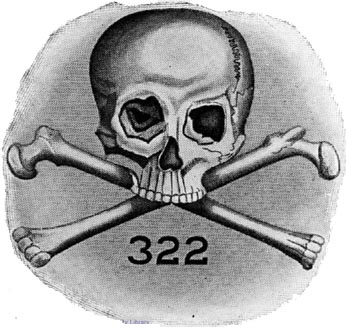Skulls are fascinating symbols with a rich history and diverse range of meanings across cultures and time periods. Here’s an exploration of the history and symbolism of skulls:
1. Symbol of Mortality:
- The most universal symbolism of the skull is its association with mortality and the transitory nature of human life. It serves as a stark reminder of the inevitability of death.

2. Memento Mori:
- “Memento mori” is a Latin phrase that means “remember you must die.” It’s a concept often associated with the skull and was a common theme in art, literature, and religious practices during the Middle Ages and the Renaissance. It urged people to reflect on their own mortality and live virtuous lives.
3. Vanitas Art:
- Vanitas paintings, popular in the 17th century, featured skull imagery alongside other symbols of life’s impermanence, such as wilted flowers, timepieces, and extinguished candles.
4. Pirates and the Jolly Roger:
- The skull and crossbones, often referred to as the Jolly Roger, is a symbol historically associated with pirates. It signified death and danger, serving as a warning to potential victims and rivals.
5. Dia de los Muertos:
- In Mexican culture, skulls play a central role in Dia de los Muertos (Day of the Dead) celebrations. Sugar skulls, or “calaveras,” are colorful and ornate representations of skulls used to honor deceased loved ones.
6. Alchemical Symbolism:
- In alchemy, the skull and crossbones were used as a symbol to represent the end of the alchemical process, signifying the completion of the philosopher’s stone.
7. Skull and Crossbones in Modern Culture:
- The skull and crossbones symbol is still widely recognized today, often associated with danger or toxicity on warning labels. It’s also popular in fashion and popular culture, representing rebellion, non-conformity, and counter-culture movements.
8. Native American Symbolism:
- In Native American cultures, the skull can symbolize strength, power, protection, and guidance. Some tribes use animal skulls in religious rituals and ceremonies.
9. Tibetan Buddhism:
- In Tibetan Buddhism, the skull cup, or “kapala,” is a ritual implement used in certain ceremonies and rituals to symbolize the impermanence of life and the transformation of consciousness.
10. Gothic and Subculture Symbolism:
- The skull has been embraced by gothic and alternative subcultures, symbolizing themes of death, darkness, and individuality. It often appears in art, fashion, and music associated with these subcultures.
11. Positive Symbolism:
- In some cultures and contexts, the skull is seen as a symbol of rebirth, transformation, and the cycle of life. It represents the shedding of the old to make way for the new.
The symbolism of skulls is multifaceted, encompassing themes of mortality, danger, rebellion, spirituality, and transformation. Its enduring presence in various cultures and throughout history highlights its capacity to convey complex and often contradictory meanings.









